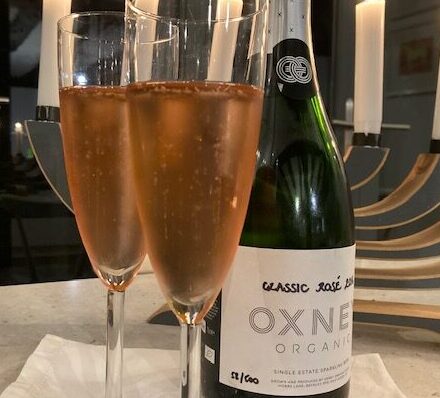What puts the pink in sparkling rosé?

Is there any other occasion wine quite like sparkling rosé on Valentine’s Day? Your answer probably depends on how you feel about Valentine’s Day, of course. For us, a good sparkling rosé chilling in an ice bucket is a vital precursor to a romantic night in.
The colour of the wine inside that bottle is clearly a big factor in its appeal. So we thought we’d use our pre Valentine’s Day blog to write about where this colour comes from, and the lengths to which we go to achieve the perfect wooing hue.
There are actually a few different ways to turn a wine pink, but there is one common factor in them all. Red grapes. The colour comes from anthocyanins in red grape skins. Leave your juice soaking in those skins for a few days and you have a red wine. Shorten that time to a few hours (or squeeze the grapes a bit harder when you’re pressing the juice out of them in the first place) and you end up with rosé.
For sparkling wines, all of the above are options in the winemaker’s toolkit. Which ones are used largely depends on the fruit that comes in at harvest.
In warm years, where ripe red grapes are rich in anthocyanins, it’s possible to extract enough colour during pressing to achieve the right shade of pink. In cooler vintages, some time on the skins may be needed to draw more colour out. Even then, it may be necessary to add 1-3% of red wine to the blend to nudge things along.
Interestingly, a degree of calculated judgement is always required to get the tone just right. As our winemaker Salvatore puts it, young wines are like teenagers, changing in character all the time. As they ferment and mature, various chemical reactions devour anthocyanins, meaning the final sparkling wine will always be slightly paler than the blend that goes into the bottle for the second fermentation.
This is another area of winemaking where science meets art, and a winemaker’s finely-honed instincts are vital. But there is a crucial maxim for these decisions: you can always add colour but you can’t take it away.
Specifically, there is one last window of colour-adjusting opportunity when the wine is disgorged and topped up with a dosage. A splash of red wine can be added at this stage if a final tweak is needed before the cork goes in.
And there, little by little, decision by decision, is the process that leaves you with a frothing glass of delicate salmon-pink wine to toast your devotion, in time-honoured fashion, on February 14th. Whether you use this information to serenade your Valentine is entirely up to you. We just hope our own passion for pink wine shines through.